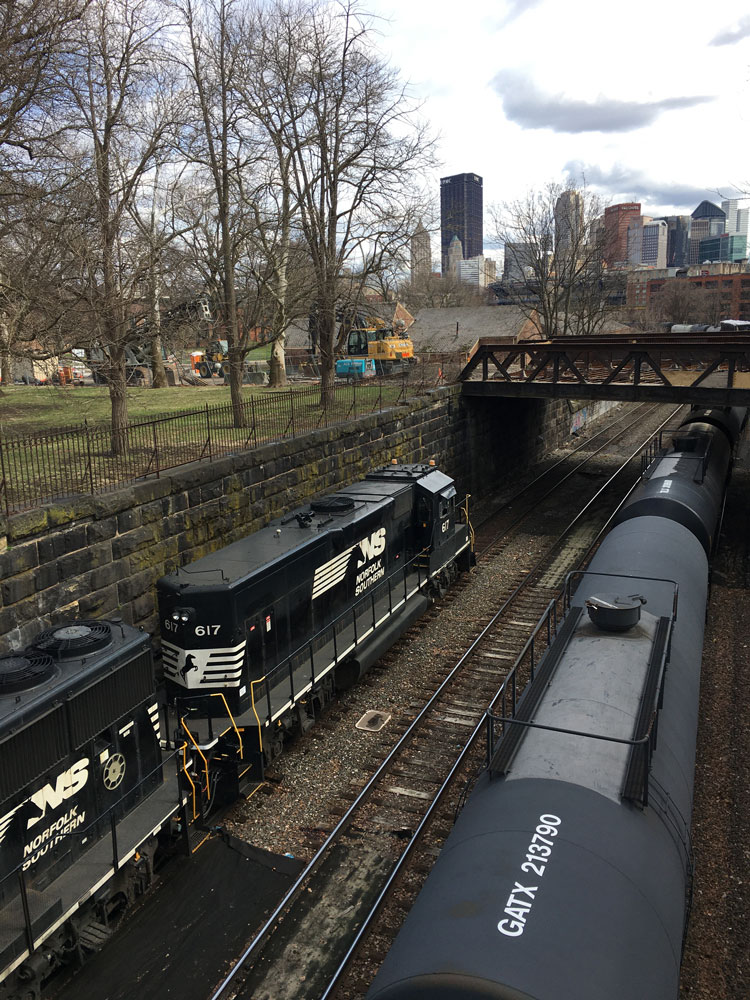
There’s a little mystery in Old Allegheny City—why did the Pennsylvania Railroad build parallel bridges, only a block apart, over their mainline and why are both on Ridge Avenue? Allegheny City was annexed by the City of Pittsburgh in 1907, so the answer is lost to history. These twin bridges mark the eastern end of what is known locally as “The Trench.”
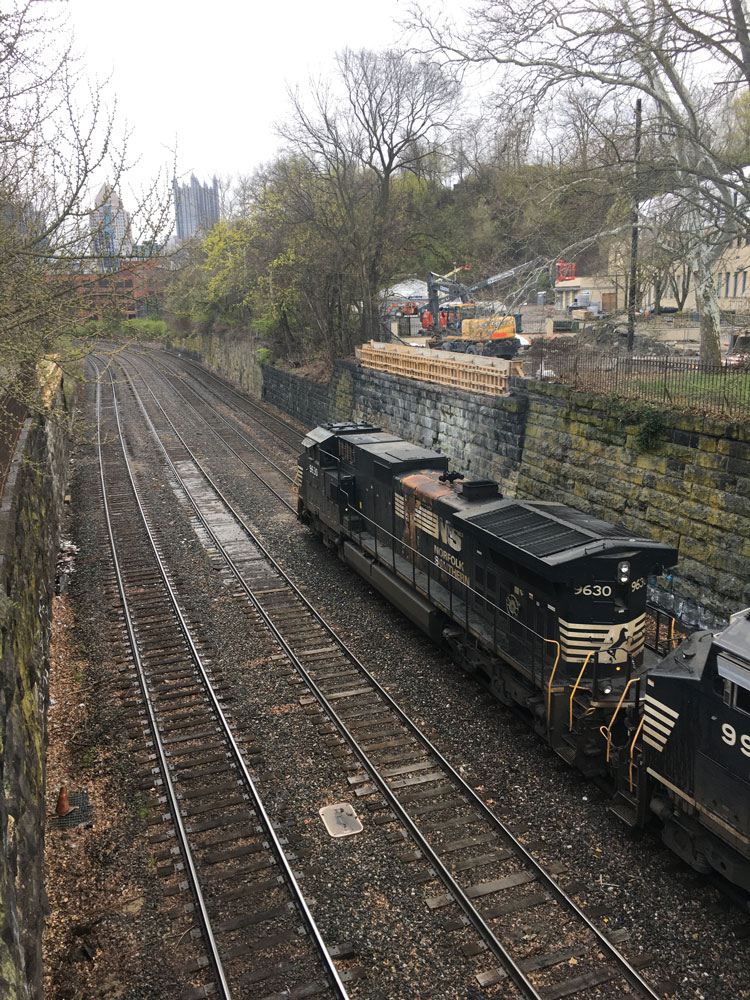
The trench is a short section of mainline running within high stone walls which bisect Pittsburgh’s West Park. The walls are topped with tall wrought iron fencing lest someone chasing their dog or a frisbee tumble some fifteen feet down onto the ballast or land on a load of coal. The edges of the trench are framed by ginkgo trees famed for their yellow fall leaves which make the mainline into a stand-in for the yellow brick road. Just fifty or so feet from the trench, there’s a local landmark, “Gus and Yiayia’s,” which serves iceballs. It is great to get an icy treat, then settle into a park bench and wait for a train (except one of those malodorous New Jersey trash trains).
But, back to our bridges—Ridge Avenue split in two as it headed east over the railroad. The easternmost leg was only a couple blocks long, but the railroad saw fit to build a nice two-lane structure which hosted vehicles for over a hundred years until its old deck succumbed to weather and road salt. Its bigger sister (also on Ridge Avenue!) was a four-lane span which lasted until 2018 when it too was deemed too corroded for safe passage and the Norfolk Southern removed it to begin raising clearances to allow double stacks to move on the mainline through the city of Pittsburgh.
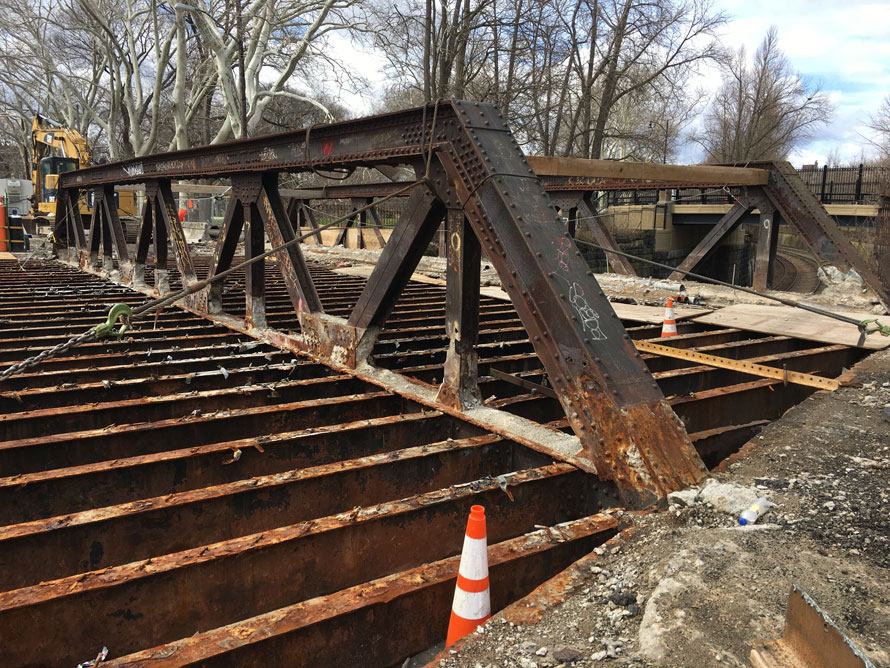
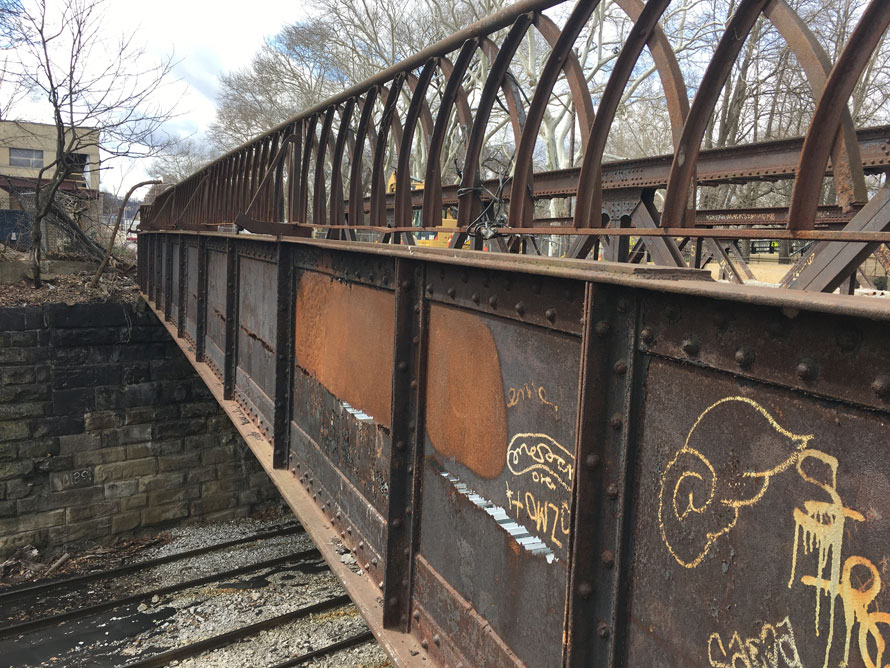
You might say, big deal, who cares about a couple old bridges? Well, if you started looking at them and the railroad that passes under, you’d find a bit of the old Pennsy and its way of doing business back when it was “The Standard Railroad of the World.”
First off, four main tracks still pass through here, harkening back to days when the PRR tied the whole state together with eight ribbons of steel—the great Broad Way. There are few examples of this left anywhere on the former PRR main, now in NS hands. The traffic just isn’t there anymore and CTC took care of the rest.
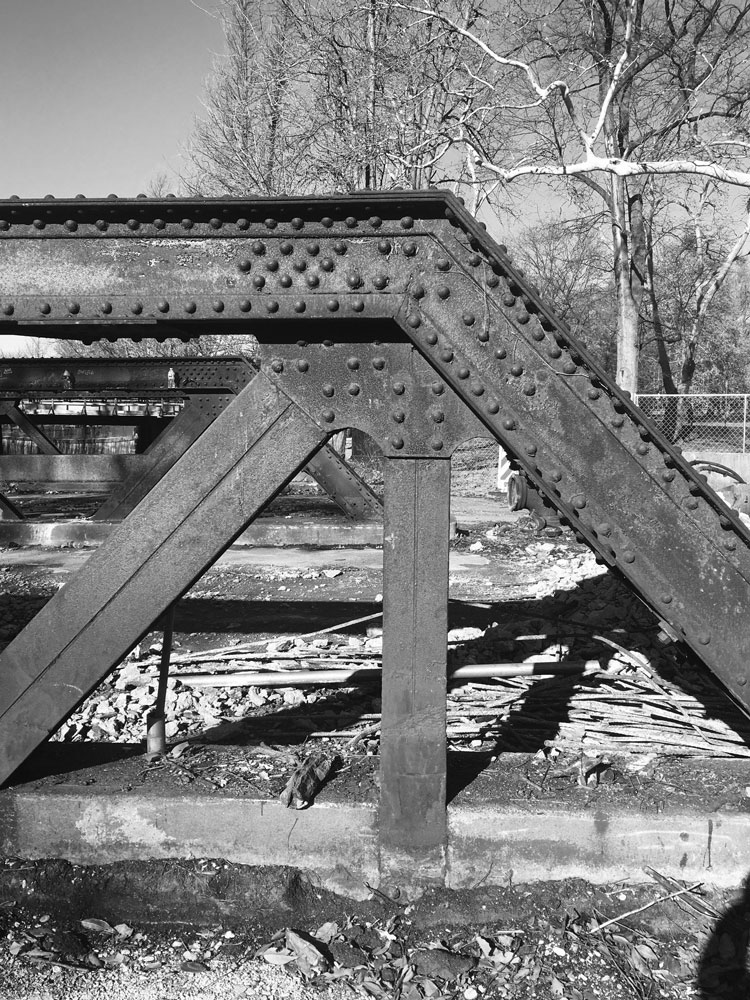
Second, look at all the details of these bridges—they are made up of steel plates and angle iron hot riveted together after being cut, punched, drilled, and bent by long-dead craftsmen. Its thick steel and survived the elements long after the paint was a distant memory.
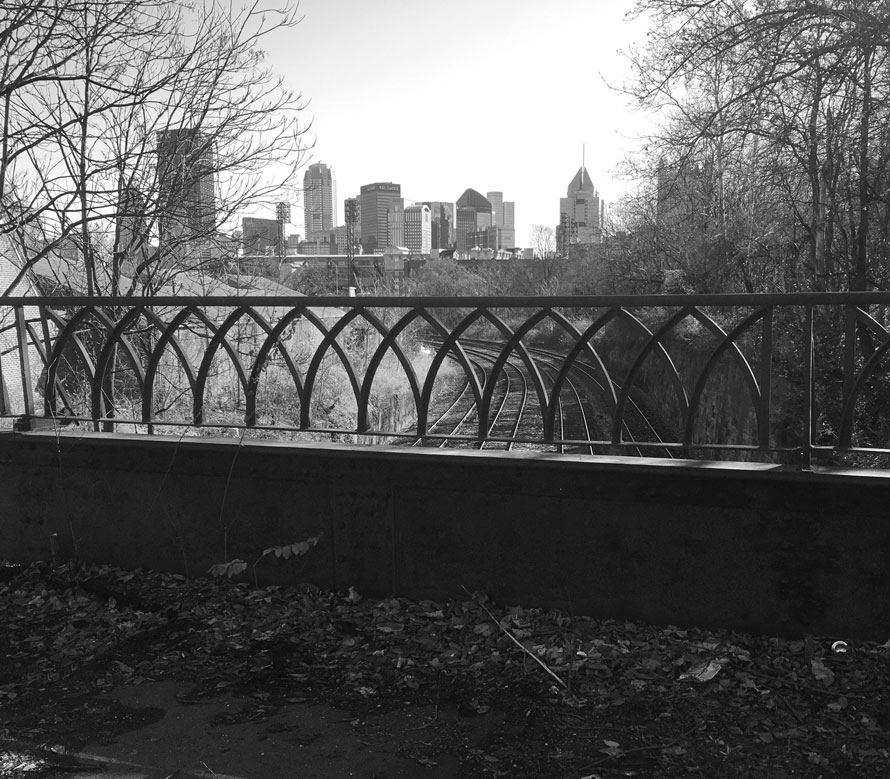
Other details stand out, like the scalloped railing at the edges and the aforementioned wrought iron railing tied to them. Somewhere there are beautiful, inked linen drawings of all of this in some dusty files that we could marvel over.
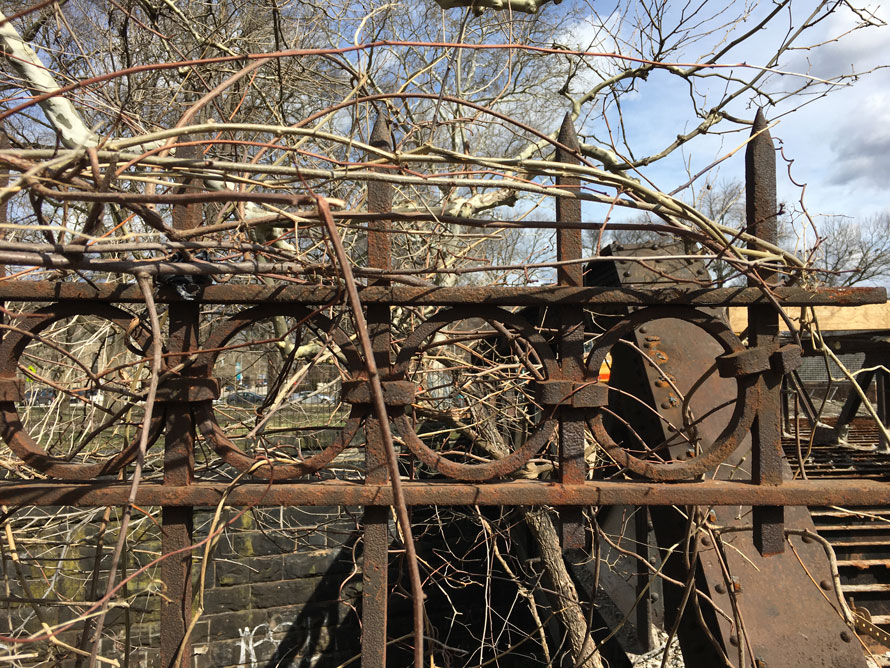
Though the easternmost bridge (right at the beginning of the trench) was removed in April, 2022, I was able to spend some time on it and even caught an Allegheny Valley Railroad train heading east, back to home rails, and found out a bit too late that the bridge afforded a nice view of the Pittsburgh downtown skyline.
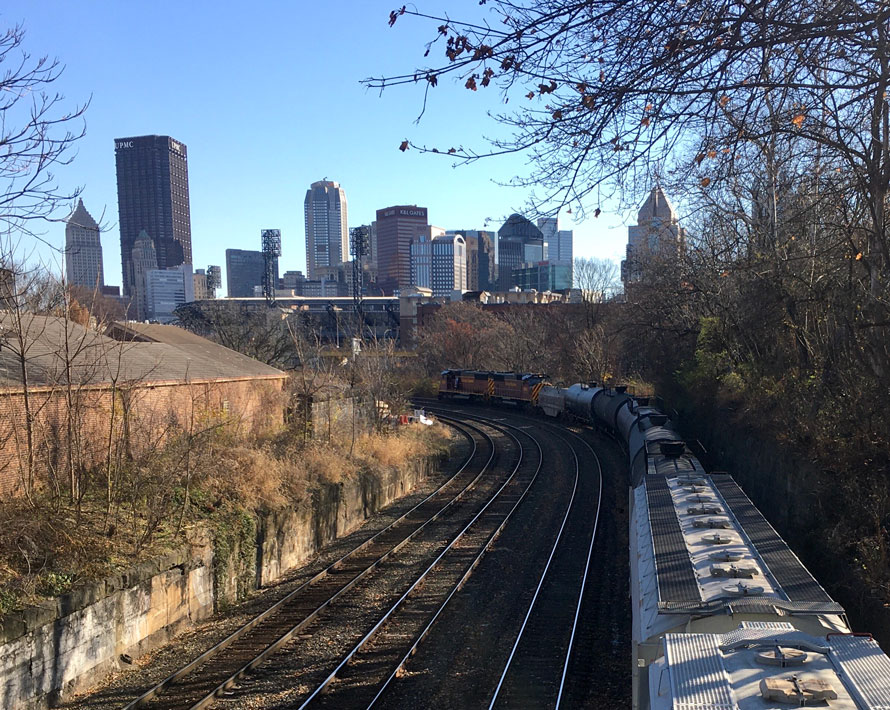
The new Ridge Avenue bridge is still a four-lane structure (two lanes for cars and two lanes for bikes) and has nice open sidewalks and the designers even installed railings made for photographers—put your cellphone or DLSR between the rungs and shoot away. Heck, you might even get to pet a pup or talk to some friendly folks as you wait on the next move. It’s not riveted together or wrought iron, but it’ll do just fine.
Kevin N. Tomasic – Photographs and text Copyright 2022
Beautiful pictures and your description of what we are looking at is spot on. So many places like this and I never studied them enough. Thanks for sharing John Springer
Nicely done ! Ahhhh the good old days thanks for sharing
Thank you for uplifting these “run of the mill” bridges, Kevin — exactly the sort of railroad infrastructure that makes the railroad corridor so fascinating. Having spent a very little time at that location myself (most recently, facebook.com/wheresteamlives/posts/pfbid0QXsKWU4hoz8G4E1WRc9a4DUX64v13uXAjg2jZc7vSg5BZzsnZexK2kv8hFjTWYq6l), I appreciate learning more about the history.
Agree greatly that it would be wonderful to see the craft of the draftsmen who drew the detail plans for this work
Compliments to the author/photographer who created this vivid profile of a tiny spot on the railroad map. I regret that I will probably never get to visit Ridge Avenue, but it feels like I was a guest on a tour provided by a welcoming and expert guide. Thank you for the experience.
Know the spot well. Thanks for the memories!!!
Thank you all for the kind compliments. The was and remains a nice park to visit, give it a look if you visit our town.
The elegance of old iron work is not to be believed. You see it in station platform rafters and in the bases of old treadle sewing machines. Form followed function, and the art of making something look beautiful was not forgotten. Perhaps it was pride of working for a great company, perhaps it was personal expression.
Thank you for bringing these examples to light.